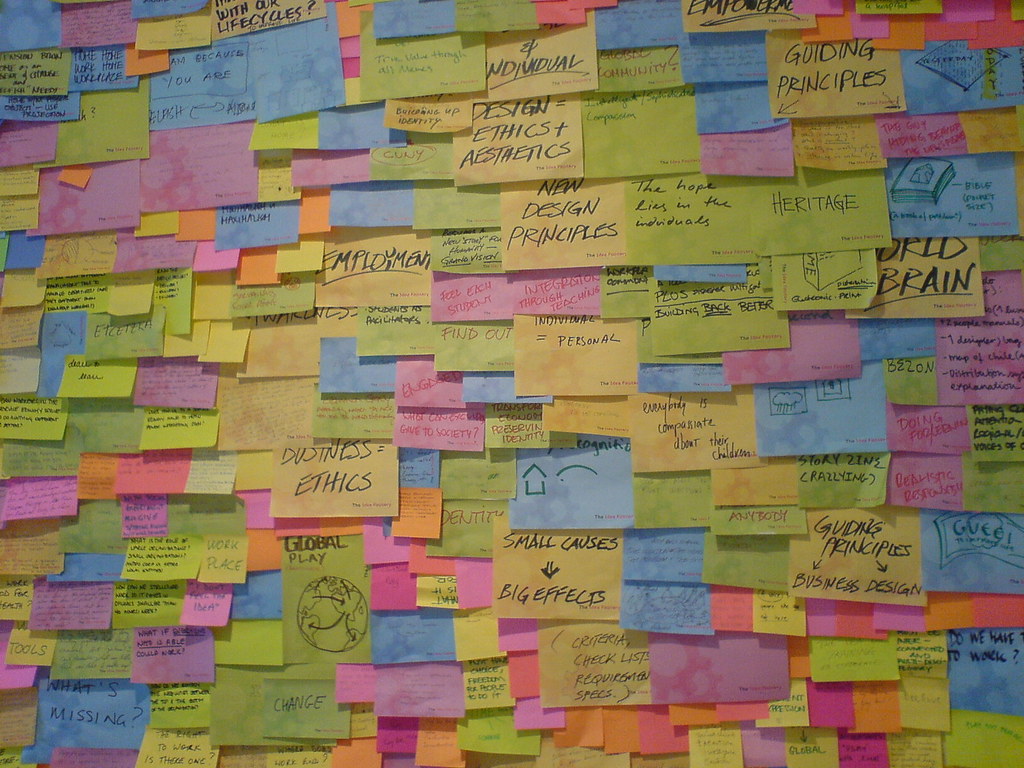What is divergent thinking?
J.P. Guilford, in the 1960s, defined divergent thinking as a method or thought process that the brain uses to generate creative ideas by exploring all possible solutions for dealing with each circumstance or problem.
This divergent process will work together with convergent thinking, which has the function of following a certain number of logical steps in order to reach a conclusion.
Do we intervene in a predictable context? or uncertain and changing?
Guilford, in defining and differentiating these two types of thinking, did so with the intention of highlighting the importance of educating students (whether in school, high school or university) in a divergent mental approach, despite the fact that educational institutions gave priority to convergent thinking, where reflection, critical thinking, creativity, originality etc. are undervalued in favor of linear thinking, which follows a series of almost predetermined rules and is based on structured processes to arrive at a single correct and true solution, without the possibility of establishing different options of equally valid answers.
I would like to emphasize that although this convergent strategy is useful and very necessary, real life and the challenges we face today, both in the workplace and in the personal sphere, we cannot get “correct” solutions from logical formulas and predetermined by theories, manuals or protocols that help us cope in an increasingly changing, dynamic, highly complex and uncertain life (as is being demonstrated in the current pandemic), manuals, nor protocols, that help us to cope in an increasingly changing, dynamic, highly complex and uncertain life (as is being demonstrated in the current pandemic), as to conclude in an extremely simplistic way, that all our problems can have a single correct solution.
In a society and education accustomed to standardization and specific specialization of professional profiles, it became evident, in 2020, the urgent need and the transcendence for the survival of companies, to train employees in divergent skills and methods, which bring ingenuity, dynamism, adaptability and authentic human capital to their projects. Thus, someone capable of offering innovation, creativity and originality can become a great leader for many of these organizational projects.
Are there different correct solutions to a single problem?
The success of divergent thinking is focused on enhancing the capacity of analysis from different points of view of the same problem, redefining and changing the habits of information processing, innovating them, in order to increase the amount of ideas that one is able to produce taking into account the problem or the stimuli that are presented.
Another important aspect of working with the divergent format is the optimization and increase of creativity, as well as of the use of the divergent format:
- The flexibility with which we create disparate responses to different proposals using different fields of knowledge.
- Fluency, which provides us with a large number of ideas.
- Originality, with which we produce uncommon and innovative ideas to highly complex problems.
- Elaboration, with which we develop and improve ideas.
How do we encourage it?
In this context, teachers, tutors, directors, etc. as well as students must be open to questioning everything.
The tutor has to propose new methodologies that stimulate creativity and encourage the students to come up with their own perspectives or ideas to achieve the objectives outside the pre-established models.
By encouraging divergent thinking, what is sought is to eliminate ideas predetermined by schemes or protocols, and then structure it to achieve new perspectives to effectively solve problems. Therefore, as far as possible, we should seek to reduce, but not eliminate, the high levels of rationality, submission to old protocols and conformism.
There is a great variety of techniques to apply divergence: the nominal group, brainstorming, synectics, mind maps… are some of the methods used to develop the generation of ideas, options and possibilities to find different solutions to a specific difficulty.
William J. Gordon defined the concept of “Synectics” as the ability to find connections and relationships between concepts, objects, ideas or theoretical fields of knowledge, which apparently have no connection.
On the other hand, we have Bob Eberle, who developed the Scamper technique, very useful to create something innovative and to train our divergent thinking, to redefine and build new and creative options, to give new solutions to standardized approaches.
N. Lieberman, a researcher and psychologist at Colombia University, demonstrated in several experiments that divergent thinking promotes positive emotional states such as joy, optimism and inner well-being.
Not only does it bring new perspectives to problems, but it also promotes a much healthier lifestyle both psychologically and emotionally, since in order to promote divergent thinking it is necessary to practice good rest, stress and emotion management, which limit the appearance of common psychopathologies such as depression, anxiety or burn out syndrome.
It is true that our life, as adults, is understood by most as very stressful, full of pressure, worries and day-to-day demands.
This does not stop being a self-imposed sentence to live under a model of high levels of stress, anxiety and anxiety … In other words, to live an obsolete model, since nowadays, we have within everyone’s reach a great number of psychological and educational options to transform not only the way we work, but also the way we relate to each other and live our lives, since at the end of the day, we are the only ones responsible for giving ourselves the necessary explanations as to why we take care of or neglect these valuable dimensions.
Gerard Martí Tejada
Psychologist. Coach. Counselor
